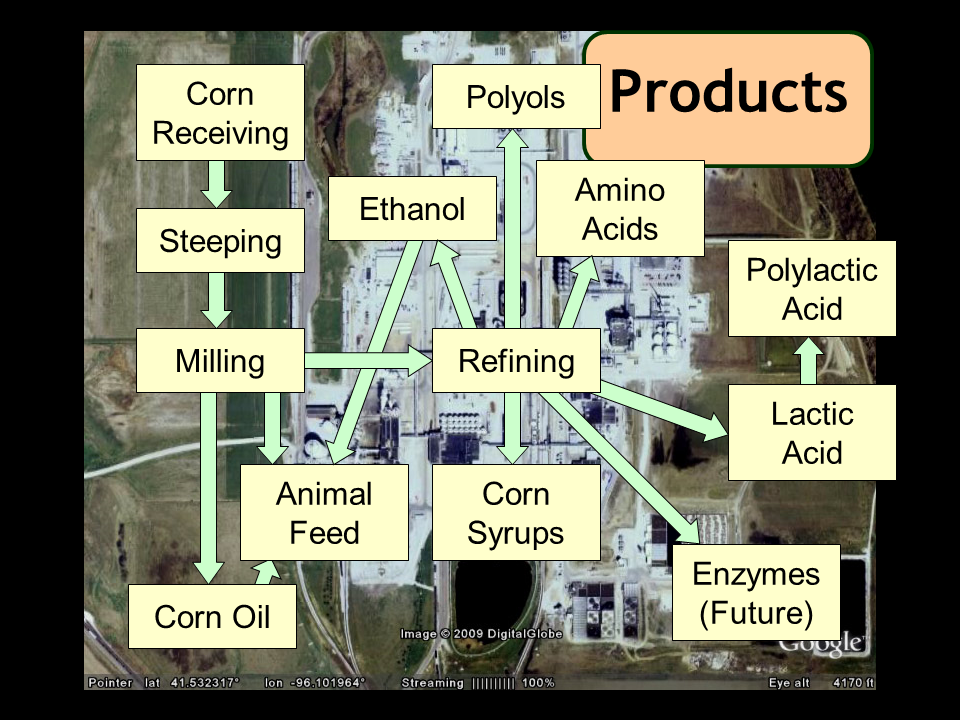Biorefining was coined to draw parallels with oil refining, where the crude oil feedstock is fractionated and chemically converted to a wide variety of petrochemicals. A modern biorefinery, such as a Cargill corn wet mill, begins with one or more sources of biomass as its feedstock. This is then separated and processed into higher-value-added components as shown in the figure below. Often, biorefining processes include one or more bioprocessing procedures as well. In the figure below, these include corn steeping, and the ethanol, polyols, amino acids, lactic acid and enzyme processes.

In my own career, I have, on occasion, had some exposure to the petrochemical industry. However, most of my engineering and consulting work as been in the fields of bioprocessing and biorefining, with the biorefining work primarily being corn wet milling. For an overview of bioprocessing and biorefining, see the presentation below.